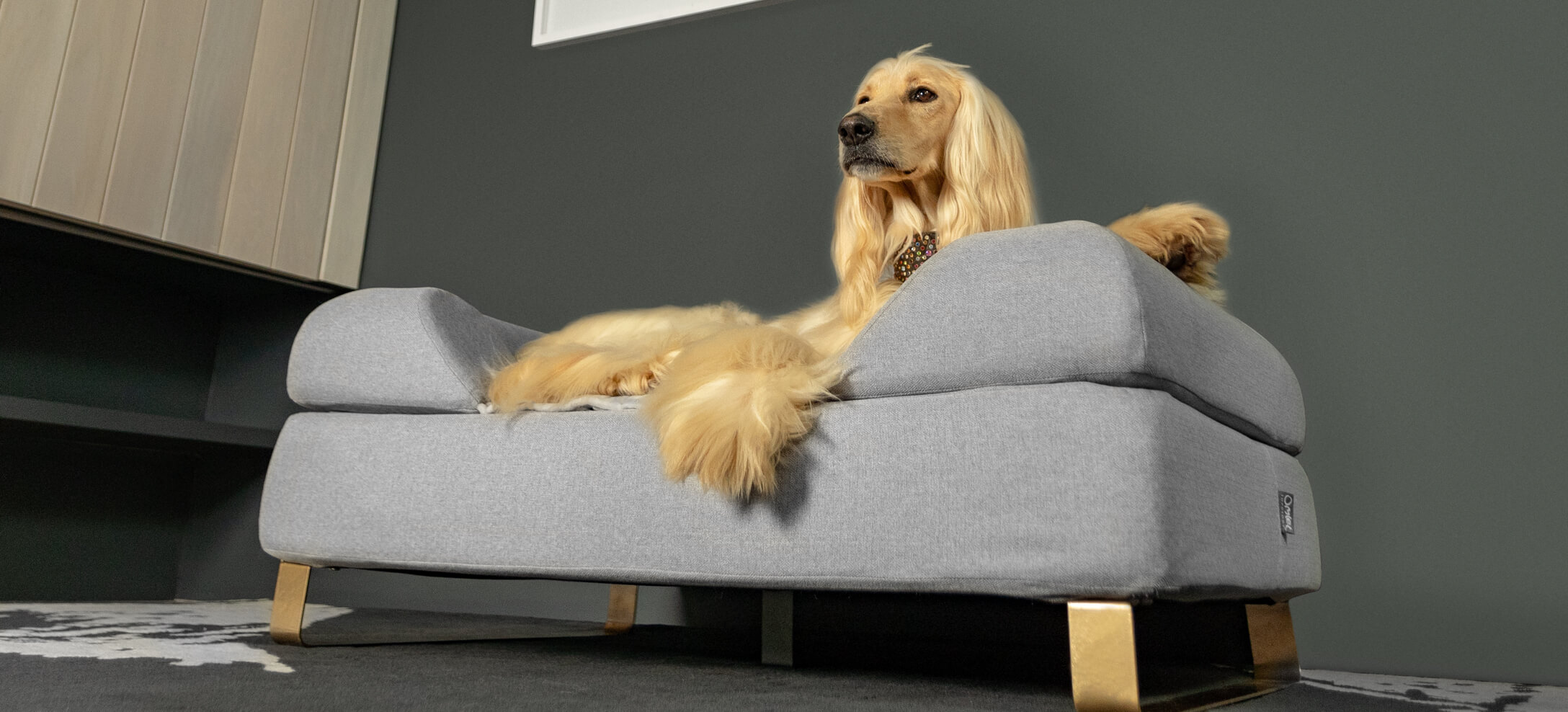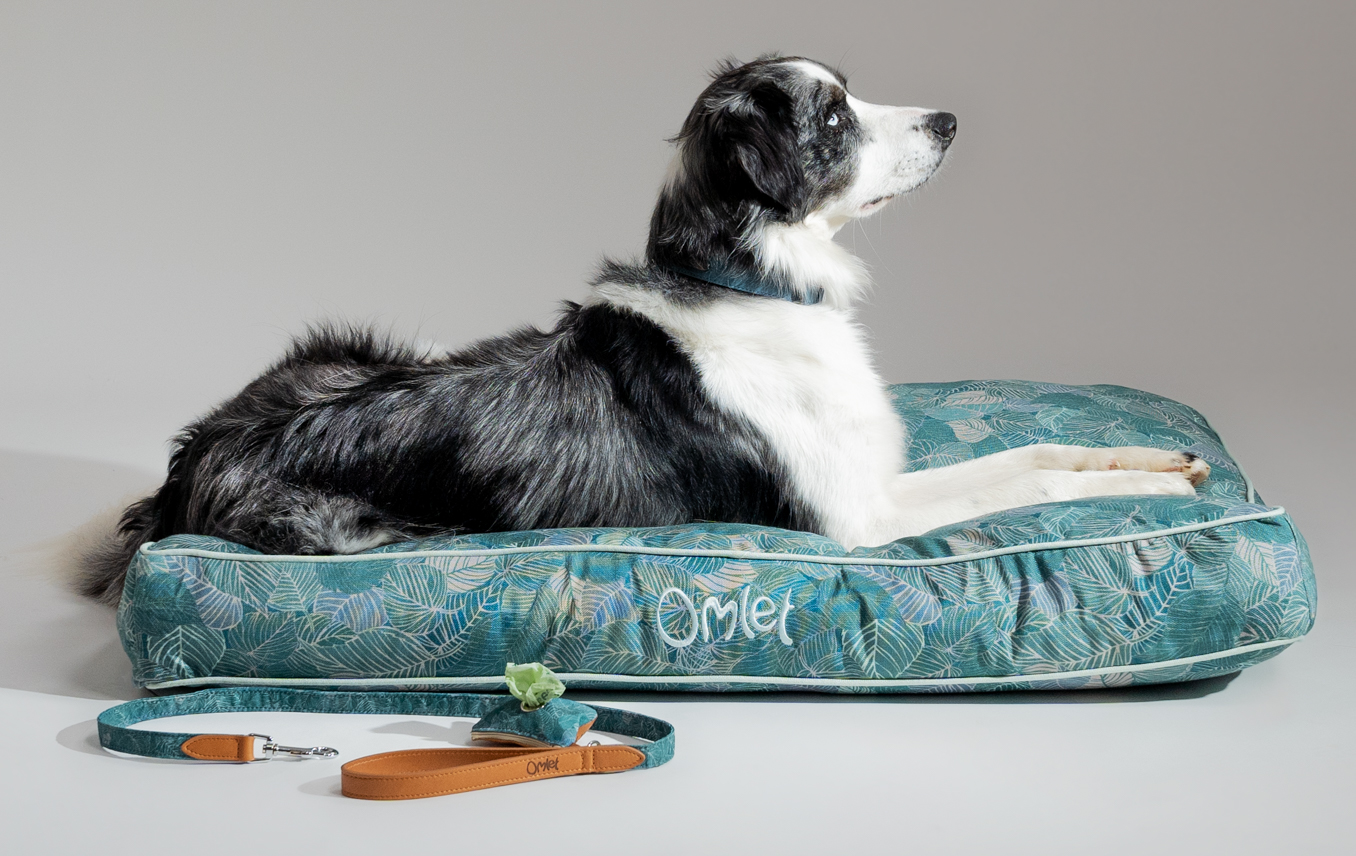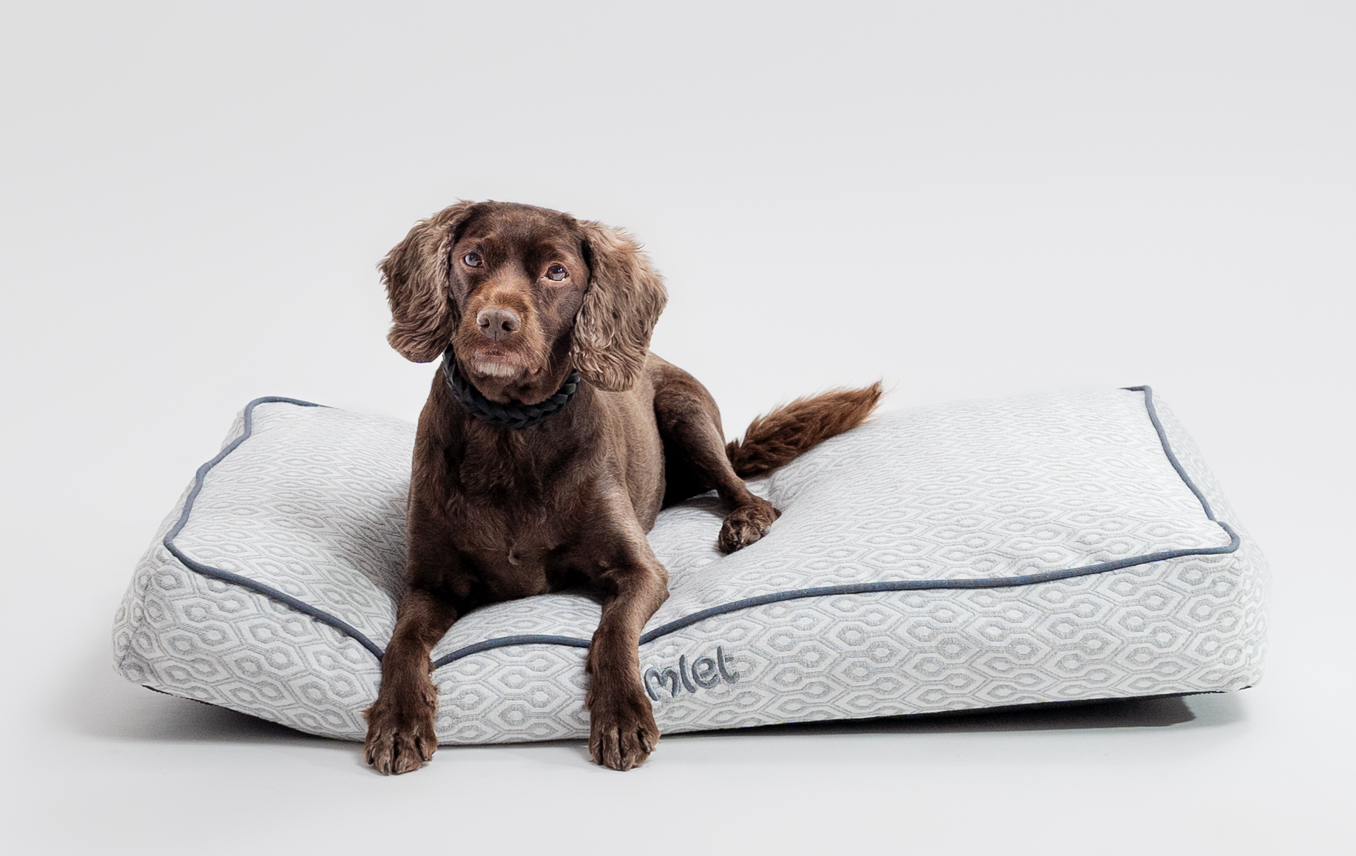Grooming is a great way to bond with your dog. Brushing helps to keep the coat and skin healthy by removing dead hair and spreading natural oils, whilst caring for your dog’s nails, ears and eyes reduces the risk of developing diseases. The below guide outlines how to groom your dog’s coat based on their coat type, as well as how to remove tangles and matted fur.
Grooming equipment
Having the correct equipment for your dog’s coat type is important. Depending on what coat type they have, the types of brushes needed to groom your dog will differ. Regardless of your dog’s coat though, you should always check for lumps, bumps, fleas and ticks. All the following types of brushes can be picked up at a relatively low cost from a pet store:
- Slicker brush - This brush has lots of fine, short wires close to each other on a flat surface. They’re used on dogs with medium to long-haired coats. They’re good at removing dead hair and stimulating the skin and coat. They can also be used to remove mats (although for stubborn mats a de-matting comb is required).
- Rakes or combs - These are used to penetrate thick hair to detangle and remove the undercoat. When looking for a suitable comb, make sure that the comb's teeth are roughly the same length as your dog's coat to ensure that the comb reaches the undercoat, but is not too long that the teeth irritate the skin.
- Bristle brush - These are used to remove dirt and debris from the coats of short and smooth-haired dogs. They can be used on longer-haired dogs but are not as effective. Choose thicker, more coarse bristles for coarse coats and widely-spaced bristles for longer coats.
- Pinhead brush - These brushes are useful for brushing out tangles in long and curly-haired dogs, as well as dogs with undercoats.
- Grooming mitt - This is a glove or a mitt that has rubber pimples on it. Grooming mitts are used on short-haired dogs to remove dead hairs and to massage and stimulate the skin.
- A mat rake - A mat rake is a tool specifically used to tease out mats without breaking or damaging the hair.
- A de-shedding tool - This removes the dead undercoat when your dog is molting.
- Nail clippers - You can use guillotine or scissor-type nail clippers but the guillotine type tends to be easier to use.
Certain hair types will need more attention than others. Make sure you have the right tools for your dog’s coat to make the experience less painful and stressful for them.
Establishing a dog grooming routine
It’s really important that you get your dog used to being brushed from an early age, and that you make grooming an enjoyable experience by offering them dog treats and lots of praise. It is better to spend a short amount of time grooming each day so that you don’t have to deal with accumulated tangles and matting.
It's a good idea to stick to a routine when grooming your dog. Make sure you’re consistent in how you brush your dog, so there are no surprises that may cause stress. The best time to groom your dog is after exercise. Either taking them out for a dog walk or exercising your pup indoors means they’ll be mentally stimulated and more relaxed before you begin.
How to groom a dog with a short, smooth coat
Dogs with a short coat are typically the easiest to groom. You should be able to maintain your dog's coat with one brushing session a week. All that needs doing is to brush the coat in the opposite direction the hair grows to remove any excess hair from underneath. Then brush in the direction the coat lies to remove any loose hair on the surface. This routine will also massage your dog and stimulate their skin, helping them maintain a healthy, shiny coat. You can use either a bristle brush or a grooming mitt for this job.
Popular short-coated breeds include greyhound, vizsla, American foxhound, English foxhound, Boston terrier, bull terrier, and English bulldog.
How to groom a dog with a medium-length coat
Just like short-haired dogs, breeds with medium coats are really easy to groom. Dogs with medium-length coats need brushing only once a week. Generally, they don’t get too dirty or mat very often. Start by using a pin-headed or slicker brush to remove any dirt, debris and tangles, then follow up with a bristle brush to remove any dead hair and to bring out the shine on the coat.
Popular medium-coated breeds include the border collie, Brittany, Cavalier King Charles spaniel, German shepherd dog, golden retriever, Pembroke Welsh corgi, Pyrenean mountain dog, and Saint Bernard.
How to groom a dog with long hair
Dogs with long coats need brushing daily to avoid getting knots or tangles. Pets that spend lots of time outside are more likely to have tangles because of the dirt and debris that get trapped in the hair. Breeds such as the Afghan Hound have very thin, silky, long hair which tangles very easily, so you can’t rely on trips to a professional dog groomer if you want your long-haired dog to look in top condition.
If your dog has a matted coat, these will need to be removed first. Use your fingers to try to tease out any remaining knots before using a pinhead or slicker brush. Follow the lay of the hair to untangle any knots and remove any dirt. When brushing out knots, hold the hair close to the skin to avoid pulling and tugging, which may be uncomfortable for your dog and provoke a few grumbles.
As you brush down your dog’s back, make sure to lift up the top layer of their coat to brush through the hair underneath, working from the roots to the tips. Work systematically from head to tail down one side and then back up the other side. The “feathers” on your dog's legs will need careful attention. Make sure you brush through to remove the knots and debris and trim any stray hairs. Finish off by using a comb to gently brush through the hair around your dog's face, being very careful not to poke them in the eye. When brushing the ears, support them with your free hand whilst brushing the hair.
Popular long-coated breeds include shih tzu, Havanese, Afghan hound, bearded collie, Yorkshire terrier, and Bernese mountain dog.
How to groom a dog with a double coat
Selective breeding has meant that some dogs have developed a weather-resistant coat that keeps them warm in winter and cool in summer. Dogs in this category have been bred to thrive in all conditions, from the Siberian husky in the Arctic to the Australian shepherd dog in the hot, dry fields of Australia.
Double-coated dogs are constantly shedding, but they will shed more in spring, ready for summer, and again in the fall, ready for winter. It is important to remove the loose molted hair, otherwise, it can form mats and clumps. Dogs with double coats need brushing twice a week, but when they are in shedding season they should be brushed several times a week.
First, use a slicker brush to remove any tangles, dirt or debris from the coat. Then use a de-shedding tool to get right down to the roots and brush outward from the skin so that you can remove any loose hair from the thick undercoat. Next, move on to using a wide-toothed comb. Make sure you get right down to the roots again and work with the lay of the coat. You should be able to comb through their fur without meeting any resistance.
Popular double-coated breeds include Alaskan malamute, chow chow, Finnish spitz, keeshond, Labrador retriever, Norwegian elkhound, samoyed, and Siberian husky.
How to groom a dog with a silky coat
Maintaining your dog's silky coat will give it a shine and feather-soft texture that will make your dog the talk of the town. Dogs with silky coats do not have a protective undercoat, so their top coat needs a lot of attention. Silky coats can easily become tangled if they are long, so it’s important to keep on top of their daily grooming.
To groom a silky coat, start by using a pinhead or slicker brush to gently remove the tangles. Then use a bristle brush to position the hair. This will also enhance the natural shine of the coat. Finish off by running a comb through their coat and trimming any untidy ends. Getting your dog’s silky coat professionally clipped might make it easier to maintain.
Popular silky coated breeds include Afghan hound, Cavalier King Charles spaniel, English cocker spaniel, English springer spaniel, Irish setter, silky terrier, and Yorkshire terrier.
How to groom a dog with a corded coat
Corded coats require a lot of attention, but grooming is not a difficult job if you establish a consistent routine early on. Before the cords develop, brush your puppy's coat daily so that they become comfortable with being groomed. However, as soon as your dog's coat begins to form cords, you must stop the brushing.
With your hands, separate and remove any knots or tangles, and gently massage the skin. Any cords that are starting to clump together must be carefully teased apart. It may be necessary to use scissors to part cords. You will need to remove anything that gets caught in the coat, such as dirt, sticks, leaves, etc. To minimize this problem, you can tie up the cords or cover them using dog clothes when taking your dog on muddy and adventurous walks. The ears, legs and tail require the most attention, as these areas risk growing into one big matted mess.
Corded breeds include puli and komondor.
How to groom a dog with a curly coat
Curly-coated dogs come in all shapes and sizes, from the toy poodle to the curly coated retriever. Their coats grow rapidly and can get long and unruly quickly! Monthly clipping helps keep on top of a curly coat, as well as regular washing, brushing and trimming with scissors. To make grooming considerably easier you may want to clip the coat quite short. It is advised that, with such a complicated coat, you should invest in a professional dog groomer, to prevent “bad hair days”. Brushing curly-coated dogs twice a week should be enough to avoid any mats and tangles forming.
Use a pinhead brush to brush through any tangles working from the head, down the chest and front legs, then the body, and finish off with the hindquarters and back legs.
Curly coated breeds include American water spaniel, bichon frise, curly coated retriever, and poodle.
How to groom a wire-haired dog
The rough, toothbrush-like coat of a wire-haired dog needs special grooming. They have wiry guard hairs that grow up through a soft undercoat. Professional trimming and stripping, as well as regular grooming is recommended as the coat can mat and tangle quite easily. When you notice that the wiry guard hairs are becoming overgrown, it’s a good idea to take your dog to a professional groomer for them to be stripped. Overgrown guard hairs often require breed-specific grooming, so stripping them can be difficult to do yourself.
Wire-haired dogs need professional stripping every three to four months. They should be brushed twice weekly. Using a slicker brush, brush with the lay of the coat to brush through any tangles. Next, brush against the lay of the coat to remove any loose hair from the undercoat. Finish off with a comb, again brushing with the lay of the coat.
Popular wiry coated breeds include airedale terrier, border terrier, Brussels griffon, cairn terrier, German wirehaired pointer, Irish terrier, Jack Russell terrier, miniature schnauzer, Norfolk terrier, Welsh terrier, and wire-haired fox terrier.
How to groom a hairless dog
Despite having no coat, hairless dogs still love a good grooming session. Think less of brushing and clipping, and more of bathing and massaging. The skin of these dogs needs extra care because of its exposure to the sun and elements.
All hairless dogs need sun cream applying as they’re very prone to sun damage, especially in the warmer months. For breeds with hair on their head and legs like the Chinese crested, use a bristle brush once a week. For completely hairless breeds like the Mexican hairless, you’ll need to bathe your dog every other week to prevent acne from developing. You’ll also need to moisturize a hairless dog after each bath using a specially designed dog moisturizer. Hairless dogs’ ears will need checking and possibly cleaning once a week, as they are prone to gathering debris.
How to groom a dog with matted hair
As well as being unsightly, matted hair can cause discomfort and itchy skin. It often forms around the ears, under the neck, under the belly and around the legs. Removing knots or matted hair isn’t too tricky, but prevention is always best. Regular grooming should prevent your dog from having any mats in the first place. However, even with care and attention, you’ll have to tackle the tangles at some point. Following these steps will help you master the matting:
- It can help to spray a detangling solution onto the tangle before you try to remove it, as this will help loosen up the hair.
- Next, try separating the matted hair by gently untangling and teasing it apart with your fingers.
- If this doesn’t work, use a metal comb, but make sure you hold the hair close to your dog’s skin so that you don’t cause any discomfort. Try to pick at the hair to separate it rather than combing it through (as the comb will probably just get stuck!).
- If the mat is still untameable, you’ll need to use a de-matting comb. A de-matting comb has sharp teeth that can cut through the mat. Pass it through the section of matted hair, and hold the hair close to the skin so that you don’t cause any discomfort. Try to use a teasing motion working from the tip of the mat to the root.
- If your dog has a section of hair that seems impossible to untangle, you might have to resort to removing it with clippers. It’s a little more risky to use scissors because it is very easy to cut your dog’s skin if they move suddenly. If you’re not confident with the clippers then you should consult a professional dog groomer for help and advice on how to safely remove the matting.
Dog grooming with Omlet
Regular grooming will help keep your dog’s coat clean and healthy. Your dog can get the full spa experience after their groom with a luxurious dog bed and dog blanket by Omlet. We create products that not only place your dog’s health and well-being at the forefront, but that are incredibly comfortable and enjoyable for them too. From dog health and hygiene products to a whole range of essential dog products, Omlet can help make grooming your dog an easy and stress-free experience.







Comments
There are no comments just yet